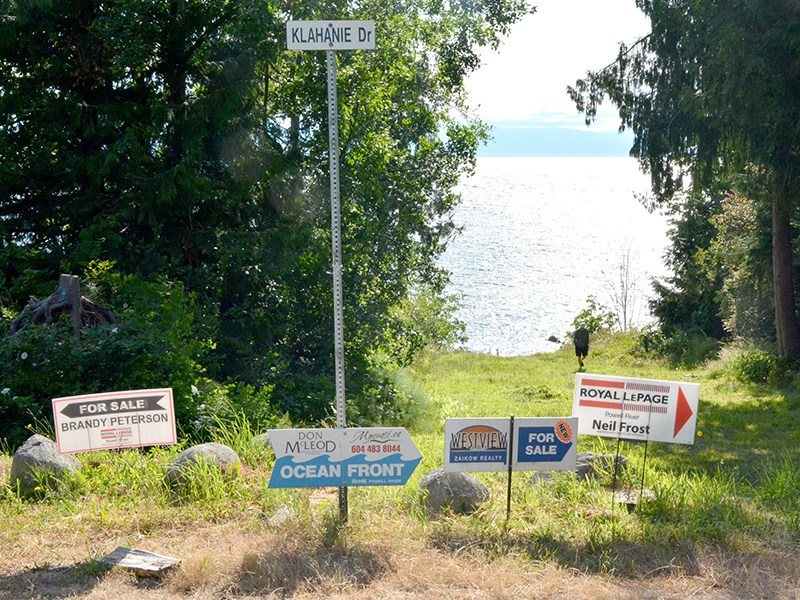According to a recent report, recreational property markets throughout BC are on the rise, something that is being mirrored in the Powell River area.
Sales of residential and investment properties have increased exponentially over the past two years, but now even the more volatile waterfront and recreational markets are starting to show signs of a turnaround, according to the 2017 Royal LePage Canadian Recreational Housing Report, released on June 20.
“It’s still a small segment of our market compared to the residential and investment,” said Powell River Sunshine Coast Real Estate Board president Neil Frost, “but there is an uptake and that is an indicator the market is healthy and hot.”
Of the 262 properties bought and sold in Powell River between January and June, realtors classified 6.9 per cent of the market to be recreational. According to Frost, this reporting comes down to a judgement call made through discussions with the client. Those numbers are up from 6.8 per cent in 2016 and 4.5 per cent in 2015.
“The thing about Powell River is that a house on Maple Avenue could be a recreational property,” said Frost. “We do have Powell Lake float cabins and we do have Savary Island. We also have some properties, whether they are in Lund or south of town, that lend themselves to being more a recreational property.”
The Royal LePage report outlined several provincial trends also being observed locally, particularly a dwindling inventory, higher demand and prices in response.
“Now, in many areas, months of pent-up demand has been unleashed onto the market, propelling sales activity higher,” stated the report. “This trend will likely continue for the remainder of the year.”
While local realtors are still seeing the usual presence of out-of-town buyers, longtime Powell River residents have been getting in on the recreational real estate action, too.
“We still do get quite a few locals who are buying things like float cabins,” said Frost, “but the out-of-town demographic is a big part of the market.”
Frost believes this may be a case of people finally fulfilling their bucket-list dreams.
“It’s people who have always wanted a cabin here, or they’ve always wanted to live on Klahanie Drive,” said Frost.
Others have sold expensive properties in the Lower Mainland, and even the Fraser Valley, in search of a more leisurely and affordable lifestyle on the Sunshine Coast or Gulf Islands, he added.
Rick Thaddeus has been selling real estate on Savary Island since 2002 and has also noticed an increase in activity, especially after a prolonged winter that “stopped the market in its tracks,” he said.
Within the past month, he has sold three properties that had not moved for nearly five years.
“It has just gone day and night,” he said, “and I think it would have happened earlier but for this winter. Maybe it’s a bit of pent-up stuff, but if it goes for another month we’re definitely going to be low on inventory, and in some aspects we’re low already.”
Still, Thaddeus said he remains unconvinced that a recreational real estate boom in general equals a boom on Savary by default.
The island is predominantly recreational to begin with, presenting an opposite challenge to the one faced by Powell River realtors when it comes to classification.
“I have trouble defining year-round residents, not recreational people,” said Thaddeus.
Regardless of a good or bad market, construction on Savary has remained stalwart.
“Over the winter, two multimillion-dollar homes were constructed,” said Thaddeus.
Builders have been busy in Powell River as well, though Frost is careful to point out that recreational properties are not necessarily defined by the structure.
Some buyers are able to live in small cabins year-round, while others opt for $750,000 waterfront homes with the intent to inhabit them for only two or three months per year.
In any case, those in the business will be watching trends carefully over the next few months.
“All of the predictions are that this year will not have as many sales, but the prices will be higher,” said Frost. “The market is healthy and it’s active.”



